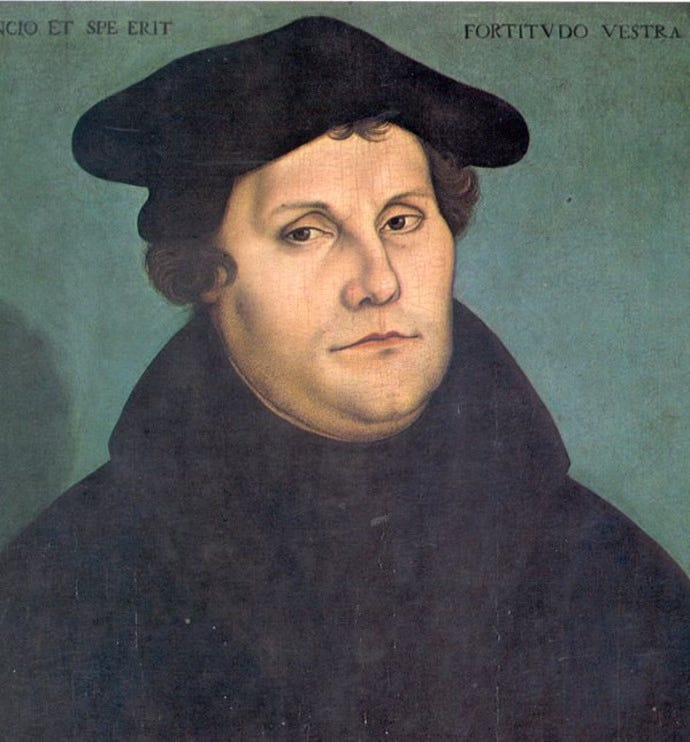Explaining one of the great conflicts
Review of The Reformation: A History by Diarmaid MacCulloch
The Reformation must be taken into account in order to understand the world today. From its origin, Christianity had the tendency to split into doctrinal factions, not only in Christological variations, but also in their practical relation to central power. Indeed, by the 15th Century, Christianity had already split into Catholic, Orthodox, and Coptic denominations, to name a few. However, the combination of their geographical isolation and the primitive state of communications technologies had enabled the authorities to maintain both relative unity and control.
According to MacCulloch, that changed radically with the Renaissance. On the one hand, scholarly questioning of the essential texts opened up an intellectual world that had been dormant since the Graeco-Roman era. Moreover, the feudal model was coming under greater stress: aristocrats were trying to preserve their fiefs against the encroachments of the modern state as it slowly emerged, that is, absolutist monarchies were beginning to consolidate power, chipping away at aristocratic independence of action. In the west, this created a natural pool of allies for opposition to the Papacy, which tended to naturally support the divine right of kings (with many exceptions, of course, as this is over-generalizing). Finally, the printing press provided explosive fuel to these debates. Luther not only became the preeminent writer of pamphlets of his time, but translated the Bible into vernacular German, in effect allowing believers to read it for themselves.
In an incredible feat of ongoing exposition, MacCulloch explains what people were believing and thinking at the time and how this released the passions that shook Europe to the core. This is a realm of Christology, i.e. whether the faithful should believe that the eucharist actually embodies the blood of Christ, symbolizes it, or is a Papist-inspired blasphemy; whether a baptism should be at birth or later in life; whether a person can be saved by redemption in Christ's forgiveness, is innately predestined to God's kingdom, or is granted it by faith (and ritual) alone; the nature of Mary's divinity or lack thereof.
That is just a thumbnail sketch of a myriad of issues that the author brilliantly encapsulates. People were tortured, executed, and burnt alive for one opinion or the other, and the author explains why and how. This was by far the most interesting part of the book for me, who was brought up an atheist: it demonstrates how much ideas and correct belief mattered then – to the point of fanaticism – not as a mere epiphenomenon as we tend to view it today, but as a justification for the most brutally violent action. Part of human nature, I fear. The Reformation’s death toll is uncountable.
MacCulloch also explains how these ideas operated in the political context, across Europe but also in the new world. This makes for extraordinarily dense reading, from why Ferdinand and Isabelle ejected the Jews from Moorish Spain as they liberated it in 1492, to Queen Elizabeth I's struggles to consolidate power via the Church of England, to the unsuccessful military campaigns of the prince of Transylvania to take over Poland.
In particular, he explains why Martin Luther allied himself with his princes during the peasant uprisings, which they ruthlessly repressed: he needed their protection while they needed his ideological independence in order to justification their struggle against the consolidation of the centralized powers. For their part, the peasants had taken inspiration directly from Luther's preaching on interpreting the Bible individually.
It is a dazzling historical tour that whets the appetite for more, which I cannot do justice to here in such succinct characterizations. MacCulloch demonstrates how religious concerns intertwined with many of the powerplays that one hears about, such as Louis XIV's attacks on the Netherlands. The final act of the Reformation wars, according to MacCulloch, was the Thirty Years War (1618-1648), a conflagration so horrific – at the cost of perhaps 8 million lives – that it led to the Peace of Westphalia. From that point, Protestant and Catholic agreed that mutual toleration, however grudging, was better than continual war.
Finally, the author examines the impact of the Reformation, not only on daily life, but as a grand historical movement. It is here that in many ways the most can be learned about how the various Christian churches (and entire cultural identities) evolved and adapted into their present forms. For example, the US is portrayed as an embodiment of the Protestant ideal in a new geographical context, which supposedly explains the far higher identification of its citizens with the church today than their paradoxically more laic counterparts in such Catholic countries as France and Italy. MacCulloch even looks, in what I interpreted as an existential psychoanalysis, at the psychology of fundamentalism, with pointed observations about the post 9/11 world. This too stimulates the reader to delve deeper into Muslim history and contemporary religious movements, which have many of the same characteristics of the Reformation. Indeed, the ridiculously overblown claims of today’s Islamophobes appear frighteningly reminiscent of Reformation fanaticism, at least to me.
If I have any criticism, it is that MacCulloch covers such a vast and sweeping movement that the reader can get lost in the details about who did what and believed what. But then, that is the nature of the subject and I do not see how he could have done otherwise without oversimplification.





